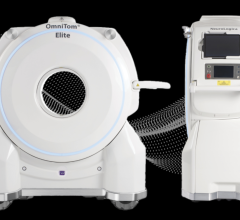I recently attended the 2016 Annual Meeting of the Society of Nuclear Medicine and Molecular Imaging (SNMMI) in San Diego. This year’s meeting included a celebration of the 40th anniversary of FDG, a radiopharmaceutical used in the medical imaging modality positron emission tomography (PET) that has had a pervasive impact on molecular imaging. At the opening plenary session, the Henry Wagner Lecture was given by Joanna Fowler, Ph.D., Brookhaven National Laboratory, on “Designing and Synthesizing FDG for the First Human Studies in 1976.” Signage throughout the convention center featured FDG pioneers and quotes on FDG by past presidents.
A new “Highlight Country” program was launched this year as well. Japan was the featured country, and had significant contributions to the meeting and to the field of nuclear medicine and molecular imaging. Jun Hatazawa, M.D., Ph.D., president of the Japanese Society of Nuclear Medicine, gave a presentation on the state of nuclear medicine in Japan. Top abstracts for each of the 50 countries participating in the meeting were recognized with awards as well.
SNMMI launched a new fellowship program to recognize distinguished service to the society, as well as exceptional achievement in the field of nuclear medicine and molecular imaging. The Fellowship is recognized with the designation FSNMMI. Selection will be based on documented excellence in volunteer service to the society and at least one of three areas: excellence in scientific discovery and innovation; educational efforts in nuclear medicine and molecular imaging; or clinical practice of nuclear medicine and molecular imaging. All past SNMMI presidents were granted Fellowship.
This year’s Image of the Year was awarded to a German team of researchers from the University Hospital of Cologne; the Jülich Research Center; and the German Center for Neurodegenerative Diseases. Measuring tau deposits using the novel radiotracer18F-AV-1451 (18F-T807), in conjunction with 11C-PiB to measure amyloid plaques and 18F-FDG to measure regional neurodegeneration, offers new insight into the neurodegenerative characteristics of Alzheimer’s disease and shows that tau pathology may be an instrumental target for disease-modifying strategies. More information on this can be found at www.itnonline.com.
On the exhibit hall floor, many new products were introduced, including:
• Siemens Healthineers highlighted a new release of its syngo.via for molecular imaging software. The company also featured a new mobile configuration of its Biograph Horizon positron emission tomography/computed tomography (PET/CT) system.
• MIM Software Inc. announced that it received 510(k) U.S. Food and Drug Administration (FDA) clearance to market full MIM products running on tablets through thin client technology such as Citrix; and
• MEDraysintell displayed its series of market reports and directories. The reports contain over 1,800 pages of intelligence covering nuclear medicine, cyclotrons, brachytherapy and proton therapy.
Next year’s meeting will take place June 10–14 in Denver, Colo.


 July 30, 2024
July 30, 2024 








